From: jeff (Wed Apr 7 21:17:04 2004)
Mt Diadem Ski Club The Austrian fellow name Schmonk and fellow climbers explored a number of mountains in the Powell River Area. One year they heard about this place where the loggers were getting snowed in, in the following year they went into this bowl and decided that the Freda Mountain area would be good for developing a downhill ski slope. In ’59 the ski club was formed, Freda Mountain was mistakenly believed to be Mount Diadem and during the second year the name Mount Diadem was being used in all the club correspondence.
The name Knuckleheads came years later. The skiing club started in 1959 and lasted until 1977 when the main lodge was burned down. Officially the club was incorporated in May 29, 1963 and dissolved in June 14, 1973. The ski club comprised of a core group of people who did most of the work throughout the years, the volunteering spirit was especially high during the early part of the ski club history. During the late ?0s and into the early ?0s, as the liberal culture was invading the society in general, the use of drug and alcohol was rampart, some people were more interested in partying than participating in the physically demanding sport and volunteer work. Near the end of the club history, irresponsible abuse and vandalism was taking place frequently and the core group was just getting too tired and discouraged. The final burning down of the lodge was the last nail on the coffin in ending the ski club. After that people started going over to Mt Washington for their expensive skiing trips.
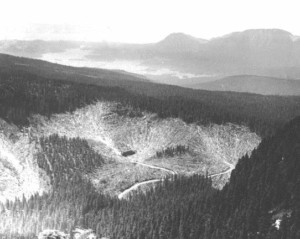 How the lodge was built. There was no facility in the area during the first year of the ski club, people had to hike up the hill and then ski down the clear cuts with downhill skis, cross country skiis were not used then. In ?1 the club began construction of the lodge and the No. 1 rope tow shed. The lodge was built in stages, first the original A-frame, then in ?5 two more extensions (Jane) were added to form a cross shape building. There was a lot of volunteers and each tripped in a number of hours per month. Roy Padgett who did not even ski, supplied the shingle bolts for the roofing and siding shakes. Win Hobson supplied the materials for building the extensions. The lodge had concrete pads for foundation, and large rough-cut logs formed the base for the building. Inside the lodge were tables, chairs, benches, cupboards, a small kitchen sink, a gas stove and two wood stoves, one of the woodstove was taken from the school house in Olsen Valley. There was a big wood shack under the same roof which was used to store the firewood. The sleeping area was in the loft area. The gas stove used to cause a lot of concern when some people would use it and then would leave while the switch was still in the open position. Murray Middleton was one young fellow who used to spend many overnight trips in the lodge.
How the lodge was built. There was no facility in the area during the first year of the ski club, people had to hike up the hill and then ski down the clear cuts with downhill skis, cross country skiis were not used then. In ?1 the club began construction of the lodge and the No. 1 rope tow shed. The lodge was built in stages, first the original A-frame, then in ?5 two more extensions (Jane) were added to form a cross shape building. There was a lot of volunteers and each tripped in a number of hours per month. Roy Padgett who did not even ski, supplied the shingle bolts for the roofing and siding shakes. Win Hobson supplied the materials for building the extensions. The lodge had concrete pads for foundation, and large rough-cut logs formed the base for the building. Inside the lodge were tables, chairs, benches, cupboards, a small kitchen sink, a gas stove and two wood stoves, one of the woodstove was taken from the school house in Olsen Valley. There was a big wood shack under the same roof which was used to store the firewood. The sleeping area was in the loft area. The gas stove used to cause a lot of concern when some people would use it and then would leave while the switch was still in the open position. Murray Middleton was one young fellow who used to spend many overnight trips in the lodge.
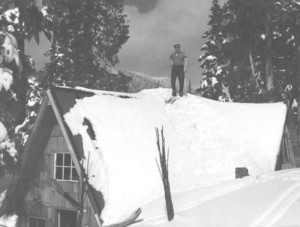 How the lodge was destroyed The exhaust pipe from the fireplace in the loft area was knocked out of position accidentally. A group of people who were not member of the club was using lodge that day, they started a fire in the woodstove without noticing the disconnected pipe. While they went out for a hike a fire developed in the loft area and spread to the rest of the lodge. A smoke alarm bell rang loudly and they attempted to put out the fire but were unsuccessful. The lodge was reduced into ashes and as a result ended 16 years of communal effort. The following story appeared in the January 12 (wed), 1977 Powell River News: “Fire destroys 16 years of ski club’s hard work” The future of PR’s Mount Diadem Ski Club is hanging in the balance after a fire destroyed its ski chalet on the Lois Lake watershed on Friday. “16 years of hard work gone”, said Don Corbould, who has been with the club since its beginning.
How the lodge was destroyed The exhaust pipe from the fireplace in the loft area was knocked out of position accidentally. A group of people who were not member of the club was using lodge that day, they started a fire in the woodstove without noticing the disconnected pipe. While they went out for a hike a fire developed in the loft area and spread to the rest of the lodge. A smoke alarm bell rang loudly and they attempted to put out the fire but were unsuccessful. The lodge was reduced into ashes and as a result ended 16 years of communal effort. The following story appeared in the January 12 (wed), 1977 Powell River News: “Fire destroys 16 years of ski club’s hard work” The future of PR’s Mount Diadem Ski Club is hanging in the balance after a fire destroyed its ski chalet on the Lois Lake watershed on Friday. “16 years of hard work gone”, said Don Corbould, who has been with the club since its beginning.
Club president Al Cramb told the News the club depended on its seasonal membership for survival and the fire had burned to the ground the shelter which members used to keep warm and to dry their clothes. The fire, which was started accidentally by families using the shelter without the club’s permission, is just one of several blows for members in the past five years. Mr. Cramb said the club’s snow tractor was destroyed by fire in 1972, apparently the work of vandals. A total of $1,000 in supplies and equipment was stolen at the end of October last year, and a $300 stretcher had been used as a sleigh and ruined. In addition, he said, equipment had been scattered outside the shelter and the club had had to replace a lock already replaced seven times in 16 months. “It is actually no surprises that it has eventually been burned up,” said Mr. Cramb of the mainly-cedar shelter, which he estimates it would cost about $10,000 to have a contractor rebuild. “It’s something we have lived in fear of ever since it was built. It has been a real worry.
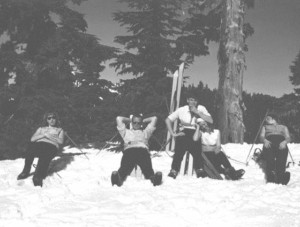 We’ve had a lot of young people go up there and of course we can’t get any help from the police in the way of protection because it is so remote.” The chalet could not be insured for the same reason, its remoteness. He said the club could not afford to rebuild the 32×40 foot building. “We don’t have the people to rebuild. It’s all been volunteer labour and without funds it is difficult. That’s why we’ll need as much help as we can get” if members decide to attempt to start again. A meeting has been called to decide that, but in any case it could not be rebuilt at this time of year. Mr. Cramb added that without the shelter the club’s operating time would be cut by at least half. The mild weather until Tuesday’s heavy snowfall hasn’t helped either: the club relies on tow rates for funds to buy such things as gas. Mr. Cramb said the club is operating on money from last year and “we have to stock up on goods and supplies. We lost most of our supplies in October.” Members might decide to go to the government for a grant “but I don’t know. That’s something we can’t speculate on.” Membership is seasonal, said Mr. Cramb. People go to the mountain to ski and join the club while they are there. In a good year will be hundreds,” he said. “Membership at the moment is negligible. We may have 20 people.
We’ve had a lot of young people go up there and of course we can’t get any help from the police in the way of protection because it is so remote.” The chalet could not be insured for the same reason, its remoteness. He said the club could not afford to rebuild the 32×40 foot building. “We don’t have the people to rebuild. It’s all been volunteer labour and without funds it is difficult. That’s why we’ll need as much help as we can get” if members decide to attempt to start again. A meeting has been called to decide that, but in any case it could not be rebuilt at this time of year. Mr. Cramb added that without the shelter the club’s operating time would be cut by at least half. The mild weather until Tuesday’s heavy snowfall hasn’t helped either: the club relies on tow rates for funds to buy such things as gas. Mr. Cramb said the club is operating on money from last year and “we have to stock up on goods and supplies. We lost most of our supplies in October.” Members might decide to go to the government for a grant “but I don’t know. That’s something we can’t speculate on.” Membership is seasonal, said Mr. Cramb. People go to the mountain to ski and join the club while they are there. In a good year will be hundreds,” he said. “Membership at the moment is negligible. We may have 20 people.
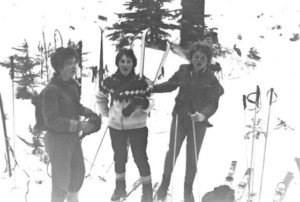 It is a core who maintain the club. “I have heard people saying it is too much trouble to keep going. I find that discouraging. We do need more a younger members who are prepared to put something into the club. The ‘old guard’s sort of dropping back now and it is time we got some new blood in the club.” He added, however, that this was another problem. Young people were unable to use the club’s facilities at the mountain because they could not drive there. Mr. Cramb said the club had approached the district school board for transportation for young people, but the request was turned down. “We don’t have the capital or resources to provide transport,” he said, adding that ploughing the road to the mountain had been another burden for the club. MacMillan Bloedel Ltd. had graded the road until last season, but had said it would not be able to do so in the future because of financial cutbacks.
It is a core who maintain the club. “I have heard people saying it is too much trouble to keep going. I find that discouraging. We do need more a younger members who are prepared to put something into the club. The ‘old guard’s sort of dropping back now and it is time we got some new blood in the club.” He added, however, that this was another problem. Young people were unable to use the club’s facilities at the mountain because they could not drive there. Mr. Cramb said the club had approached the district school board for transportation for young people, but the request was turned down. “We don’t have the capital or resources to provide transport,” he said, adding that ploughing the road to the mountain had been another burden for the club. MacMillan Bloedel Ltd. had graded the road until last season, but had said it would not be able to do so in the future because of financial cutbacks.
The club was started in 1959 by about 12 people and served mainly families, especially those with young children who could not afford to go to more expensive resorts. Construction of the centre was started in 1961, and it was extended in 1962 and 1963, with help from local companies and volunteers. “We did it with second-hand and donated materials and volunteer labour,” said Mr. Cramb. Even that sounds easier than it was: Don Corbould adds that all materials were packed up the mountain, as the road at that time didn’t extend to the chalet site. The double shake roof was cut from blocks that went up the mountain the hard way – carried by members. Later, transport was lent and discounts given.
The club charges $20 for family membership, 15 for adults and $10 for students under the age of 18. Nonmembers may use the facilities on land leased from the provincial government for $3 a day. Membership brings reduced rates on such items as tows to the top of the mountain.
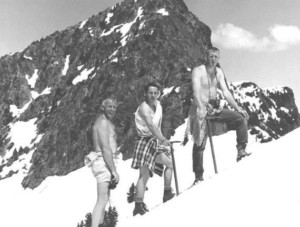 Although named Mount Diadem, the club is not at Mount Diadem. The mountain used is unnamed – thought at first to be Mount Diadem, it is located off the Frieda Lake road about 35 miles from Powell River. Until last year the club held an annual Ski Ball, which brought in “quite a bit of money”, and Mr. Cramb said it might be possible to reinstate the ball to raise money for rebuilding the shelter. Tow facilities will still be available at the mountain in spite of Friday’s fire. The club’s snow tractor was not damaged – it was in Powell River because there hadn’t been sufficient snow at its normal site.” Later a plan to rebuild the lodge was put in place, new construction materials were brought into the site but the enthusiasm did not last, construction never got off the ground and the materials were stolen since.
Although named Mount Diadem, the club is not at Mount Diadem. The mountain used is unnamed – thought at first to be Mount Diadem, it is located off the Frieda Lake road about 35 miles from Powell River. Until last year the club held an annual Ski Ball, which brought in “quite a bit of money”, and Mr. Cramb said it might be possible to reinstate the ball to raise money for rebuilding the shelter. Tow facilities will still be available at the mountain in spite of Friday’s fire. The club’s snow tractor was not damaged – it was in Powell River because there hadn’t been sufficient snow at its normal site.” Later a plan to rebuild the lodge was put in place, new construction materials were brought into the site but the enthusiasm did not last, construction never got off the ground and the materials were stolen since.
Ski Cats During the mid ’60’s people had to either walk or be transported up in snowmobiles up to the ski area. It was until later that ski cats were purchased to provide transportation for the 2 mile trip from the parking area to the lodge. There were 3 ski cats used on the slope. The first one has an open cab and was later sold to the ski hill in Vernon. The second one was sold to some guy in Wildwood. The third one was burned down in June, 1972 in an act of vandalism.
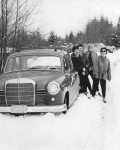 The story appeared in Thursday, June 29, 1972 Powell River News: “‘Senseless piece of vandalism’…Club’s snow vehicle wrecked as vandals set fire to unit” Vandals have destroyed Mt. Diadem Ski Club’s ski-cat. The ski-cat, a treaded snow vehicle, was wrecked and burned by vandals some time last week. “It was discovered last Thursday by the logging people,” Roger Killin, club spokesman said. “They contacted the RCMP and the police contacted us. We went up Friday evening t look at it. It was last seen in one piece Monday, so it happened between Monday and Thursday. “The replacement value of the ski-cat is $10,000,” Killin said, and “that’s what it would cost now. We got this one from Green Mountain Club in Nanaimo. It cost us $2,000 and we did a lot of repairs to it, including a new motor this past winter.” The ski-cat was not insured. “it’s just a senseless piece of vandalism,” Killin said. “I guess somebody is just a little sick.” Killin said that because rocks were discovered on the roof of the wrecked cat and logs inside, he surmised that the vandals smashed windows in the car first before putting wood in it and setting it on fire. “We had an auxiliary gas tank on the outside of the cat,” he said. “The lid was found near the cat, not burned, so we guess they took the lid off the tank and poured the gas out of it to light the cat on fire.” Killin explained that the cat was impossible to insure because it was left unattended much of the time and was operating in a forest fire areas. “We have to take those kind of chances with our equipment,” he said, “and as a result we’re very vulnerable. The only damage we’ve had before is minor, mostly done by bears trying to get in the cabin. “There’s nothing salvageable on the cat,” he said, “it’s a one hundred per cent write off.” The cat had rubber tracks and ran on pneumatic tire. All of it was consumed in the fire.
The story appeared in Thursday, June 29, 1972 Powell River News: “‘Senseless piece of vandalism’…Club’s snow vehicle wrecked as vandals set fire to unit” Vandals have destroyed Mt. Diadem Ski Club’s ski-cat. The ski-cat, a treaded snow vehicle, was wrecked and burned by vandals some time last week. “It was discovered last Thursday by the logging people,” Roger Killin, club spokesman said. “They contacted the RCMP and the police contacted us. We went up Friday evening t look at it. It was last seen in one piece Monday, so it happened between Monday and Thursday. “The replacement value of the ski-cat is $10,000,” Killin said, and “that’s what it would cost now. We got this one from Green Mountain Club in Nanaimo. It cost us $2,000 and we did a lot of repairs to it, including a new motor this past winter.” The ski-cat was not insured. “it’s just a senseless piece of vandalism,” Killin said. “I guess somebody is just a little sick.” Killin said that because rocks were discovered on the roof of the wrecked cat and logs inside, he surmised that the vandals smashed windows in the car first before putting wood in it and setting it on fire. “We had an auxiliary gas tank on the outside of the cat,” he said. “The lid was found near the cat, not burned, so we guess they took the lid off the tank and poured the gas out of it to light the cat on fire.” Killin explained that the cat was impossible to insure because it was left unattended much of the time and was operating in a forest fire areas. “We have to take those kind of chances with our equipment,” he said, “and as a result we’re very vulnerable. The only damage we’ve had before is minor, mostly done by bears trying to get in the cabin. “There’s nothing salvageable on the cat,” he said, “it’s a one hundred per cent write off.” The cat had rubber tracks and ran on pneumatic tire. All of it was consumed in the fire.
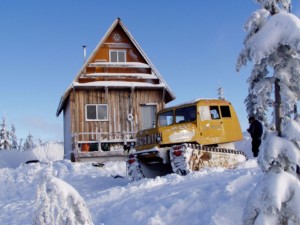 Killin said the local club was extremely lucky to obtain the cat in the first place. “We need a vehicle of that type,” he said, “because it’s a two mile hike from our parking lot to the ski area. This can be pretty rough if you’ve got kids or carrying your skis and a pack. The ski-cat was used to transport packs, skis and children to the cabin. This has deprived a lot of people of recreation. A tremendous number of people would ski more if it wasn’t for the two mile walk. We had a lot of interest going in the club and in skiing.” The cat was 12 miles from the highway when it was burned. Club members were scheduled to go up and get the cat out of the bush for the summer, but spring rains washed the road out. The company only recently fixed the road and vandals got to the cat before club members did. The cat was plainly marked with ‘Mt. Diadem Ski Club’ on the front. “We spent a tremendous amount of time and energy getting that unit ready.” Killin said. “We worked weekends and evenings on it. We felt that club needed that type of vehicle to bring skiing to Powell River. We still need a vehicle but first we have to pay for that one.” The ski club still owes most of the money on the ski-cat. Killin estimated it would take four years to pay it off. “The ski club is a marginal operation,” Killin said, “just about every cent we take in goes to the maintenance of the club, gas for the tow engines, ropes, maintenance of the cabin. There just isn’t any money left over.”
Killin said the local club was extremely lucky to obtain the cat in the first place. “We need a vehicle of that type,” he said, “because it’s a two mile hike from our parking lot to the ski area. This can be pretty rough if you’ve got kids or carrying your skis and a pack. The ski-cat was used to transport packs, skis and children to the cabin. This has deprived a lot of people of recreation. A tremendous number of people would ski more if it wasn’t for the two mile walk. We had a lot of interest going in the club and in skiing.” The cat was 12 miles from the highway when it was burned. Club members were scheduled to go up and get the cat out of the bush for the summer, but spring rains washed the road out. The company only recently fixed the road and vandals got to the cat before club members did. The cat was plainly marked with ‘Mt. Diadem Ski Club’ on the front. “We spent a tremendous amount of time and energy getting that unit ready.” Killin said. “We worked weekends and evenings on it. We felt that club needed that type of vehicle to bring skiing to Powell River. We still need a vehicle but first we have to pay for that one.” The ski club still owes most of the money on the ski-cat. Killin estimated it would take four years to pay it off. “The ski club is a marginal operation,” Killin said, “just about every cent we take in goes to the maintenance of the club, gas for the tow engines, ropes, maintenance of the cabin. There just isn’t any money left over.”
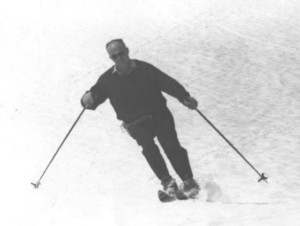 He said the club will have to work at money raising projects “and we’ll have to stretch the dollars. Hopefully we won’t have to raise rates.” The ski club presently has about 100 members and there are three or four times that many active skiers in Powell River. “We need a new vehicle,” Killin said. Ski-cats aren’t just laying around. The price of other types of snow-vehicles is just astronomical and out of our price range, but we’re going to start looking. This really has set skiing back in Powell River.” The unofficial story was that one group who planned to spend a weekend in the lodge for a big drinking party was refused access. The act of vandalism was their form of vengeance. Some member of that group still live in Powell River and they know who they are.
He said the club will have to work at money raising projects “and we’ll have to stretch the dollars. Hopefully we won’t have to raise rates.” The ski club presently has about 100 members and there are three or four times that many active skiers in Powell River. “We need a new vehicle,” Killin said. Ski-cats aren’t just laying around. The price of other types of snow-vehicles is just astronomical and out of our price range, but we’re going to start looking. This really has set skiing back in Powell River.” The unofficial story was that one group who planned to spend a weekend in the lodge for a big drinking party was refused access. The act of vandalism was their form of vengeance. Some member of that group still live in Powell River and they know who they are.
Rope Tows No 1 rope tow shed was originally built with logging debris, has an old 6 cylinder Packard as the rope drive, the rope ran uphill towards the ridge for 800 ft and was used as a beginner’s run. Dennis Keele (mill engineer) laid out the rope run. Al Smith was the builder. Sheaves from the paper machine and cotton ropes were used. The cotton rope had a tendency to break often and it had to be spliced many times.
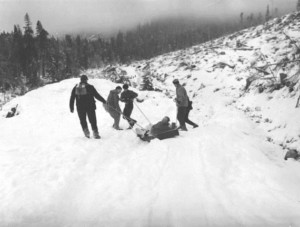 There were lessons and junior races conducted on the No. 1 ski run. There was a big yellow cedar stump half way up the hill which interfered with the rope run, some time later it was blasted out with dynamite and cleaned up with a tractor. The original rope tow system lasted until ’75 when it was replaced with a A-frame building with a Chev as the rope drive. Dick Stevens was the mill carpenter who built the concrete pads, cut lumber for the platform and the shed itself. Proper tow rope made with hemp was used and lasted a lot longer.
There were lessons and junior races conducted on the No. 1 ski run. There was a big yellow cedar stump half way up the hill which interfered with the rope run, some time later it was blasted out with dynamite and cleaned up with a tractor. The original rope tow system lasted until ’75 when it was replaced with a A-frame building with a Chev as the rope drive. Dick Stevens was the mill carpenter who built the concrete pads, cut lumber for the platform and the shed itself. Proper tow rope made with hemp was used and lasted a lot longer.
After the ski club was abandoned, the shed sat unattended for the next 20 years. In winter of ’97 the shed was rebuilt by volunteers of the new “Knuckleheads winter recreation association”, the Chev was cut up into pieces and hauled down the mountain in the summer of ’98. The shed is now a popular winter ski cabin and named the “Hillton”. No 2 rope tow ran up the hill for 1000 ft towards the Knuckle Ridge and was used as the ski run for seniors.
Often the rope was buried under deep snow and had to be dug out, the digging would take a good half a day and the rope tow was not used as frequently as a result. The ski run is now overgrown with trees, but the old motor shed and a stretcher winch half way up a tree are still visible. The pulleys which was made of solid brass has since been stolen.
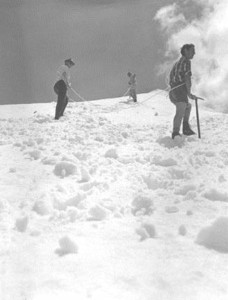 No 3 tow shed is located at the junction of E400 and E410. It was built around ’73 by Ted Carlson and ? There was a lot of snow in the area the previous years, which helped the decision for building it. The rope ran both up and down from the shed, one ran uphill towards the lodge, the other downhill over the Alpha creek and ended up near the the Cannonball run on E branch. No 3 tow system never ran and the rope was used for the No 1 tow instead. In around ’97 thiefs stole the roofing and decking materials. The platform is still in good shape and will possibly be used for any future cabin expansion.
No 3 tow shed is located at the junction of E400 and E410. It was built around ’73 by Ted Carlson and ? There was a lot of snow in the area the previous years, which helped the decision for building it. The rope ran both up and down from the shed, one ran uphill towards the lodge, the other downhill over the Alpha creek and ended up near the the Cannonball run on E branch. No 3 tow system never ran and the rope was used for the No 1 tow instead. In around ’97 thiefs stole the roofing and decking materials. The platform is still in good shape and will possibly be used for any future cabin expansion.
Interesting stories
The Watercan Junction is where E Branch crossed Alpha Creek, an empty water can was left there to be filled during the trips up to the lodge.
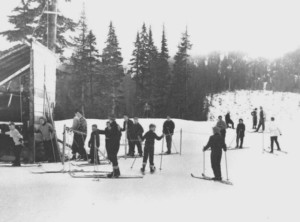 The Cannonball Run which is the slope on E branch just below the Watercan Junction was named after John Cannon. One year a big avalanche came down from the slope above and cut across it. Now that whole area is covered with 20?tall trees.
The Cannonball Run which is the slope on E branch just below the Watercan Junction was named after John Cannon. One year a big avalanche came down from the slope above and cut across it. Now that whole area is covered with 20?tall trees.
A black bear somehow got inside the lodge and spilled open a can of paint, escaped through the window when alarmed by people coming, left behind a trail of white footprints.
Volunteer
- Help us out…
- We are always looking for new members who want to help build and maintain our wonderful trail networks and cabin infrastructure in the Powell River Backcountry…
- Have some equipment to help build & maintain trails & cabins? Cat ski or ski lift to donate? Build some trails & cabins?
- Get involved today – send us an email and we’ll be in touch!
Cabin Donations
- Support trail & cabin maintenance – Our cabins have a suggested donation of $10/day for non members.
- Your donations make this non profit volunteer group possible to help cover propane, pellets, fuel and cabin maintenance.
- Interested in becoming a sponsor? Please send us an email, or submit donations through the link below…
- Please click on the button below to be redirected to PayPal secure payment…
- Email address to make payments to: kwrapr@gmail.com

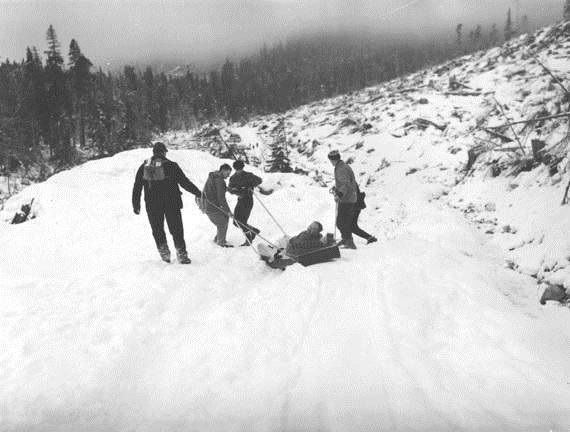
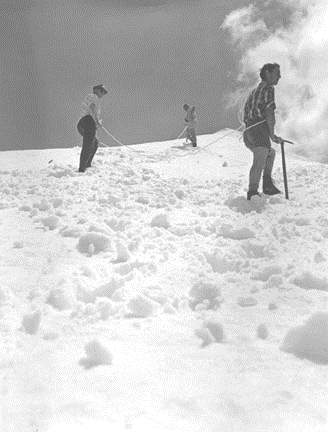
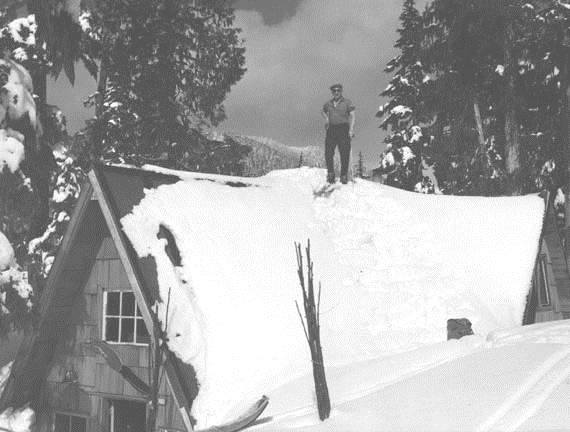
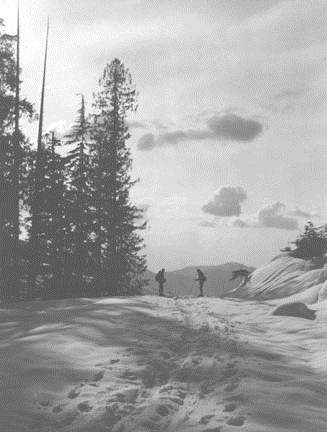
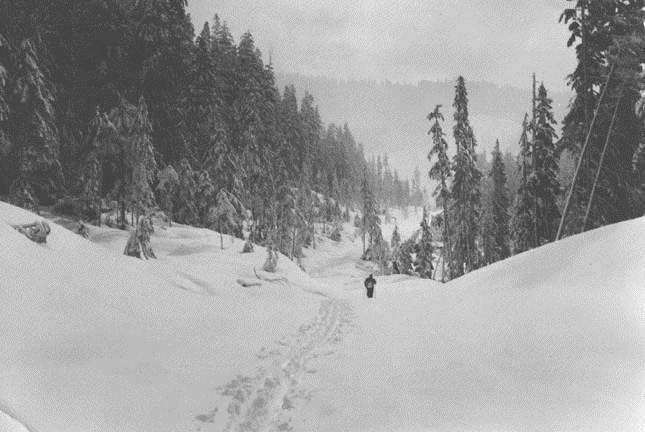
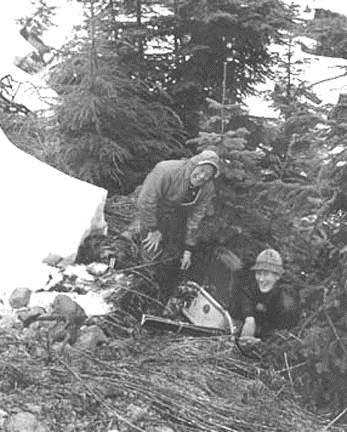
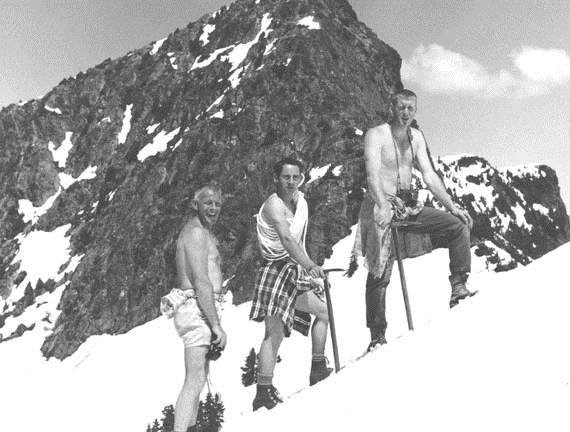
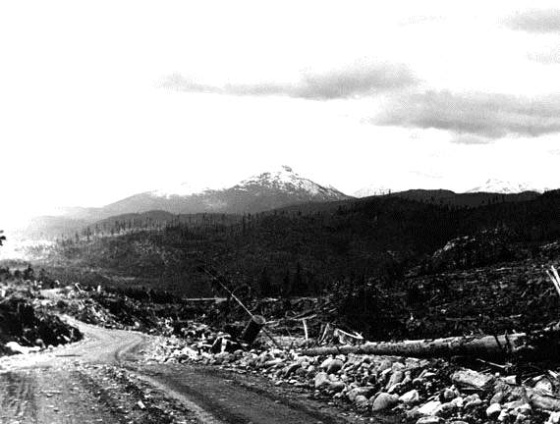
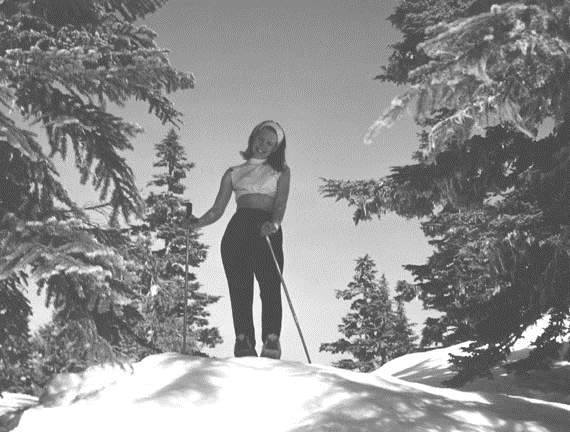
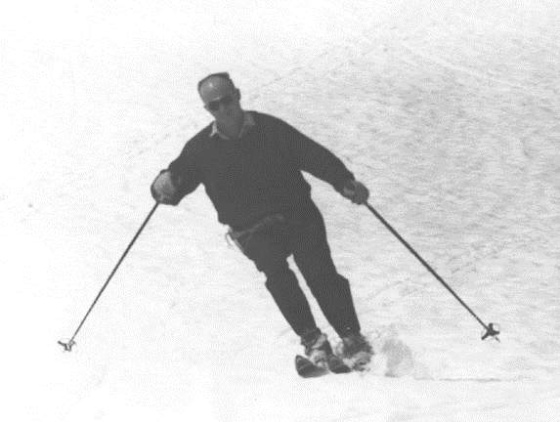
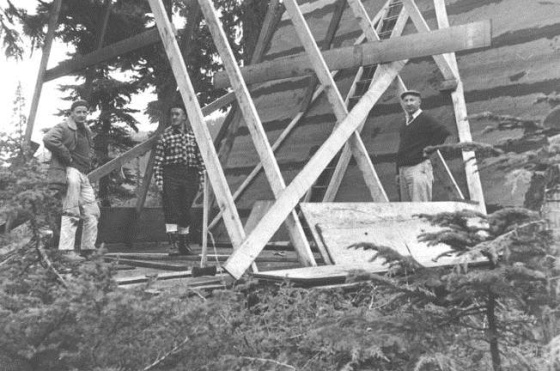
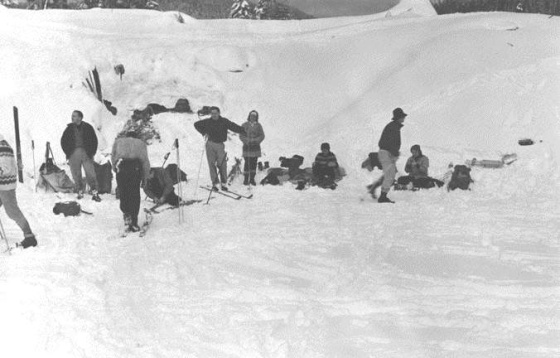
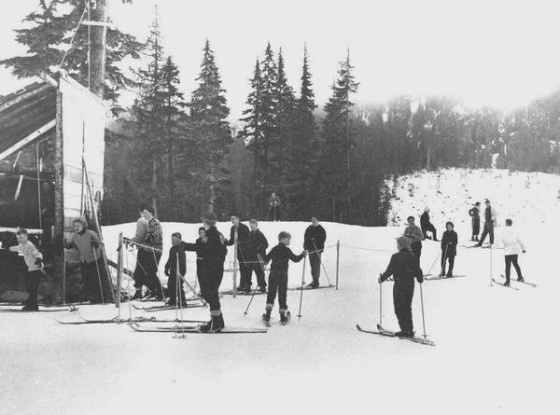
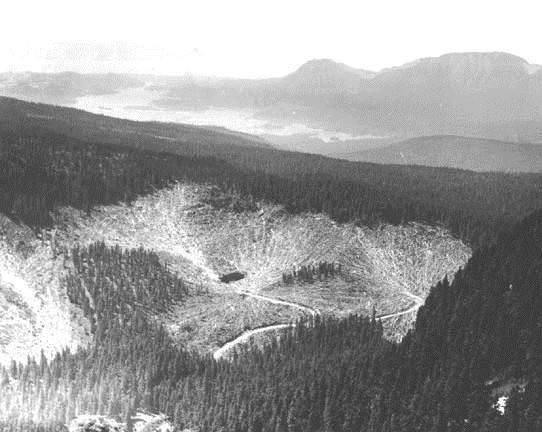
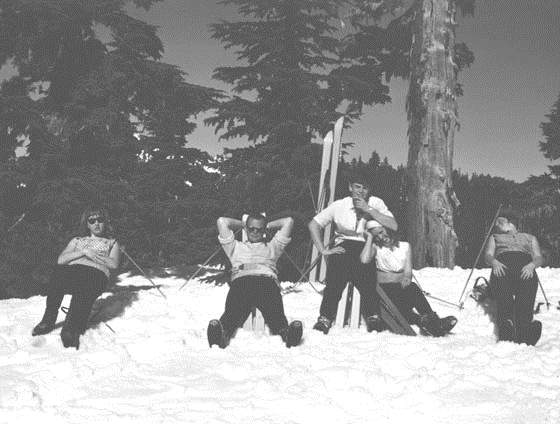
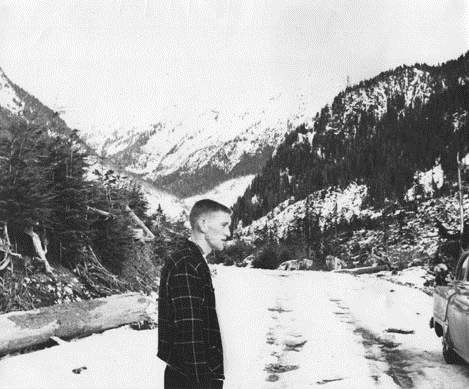
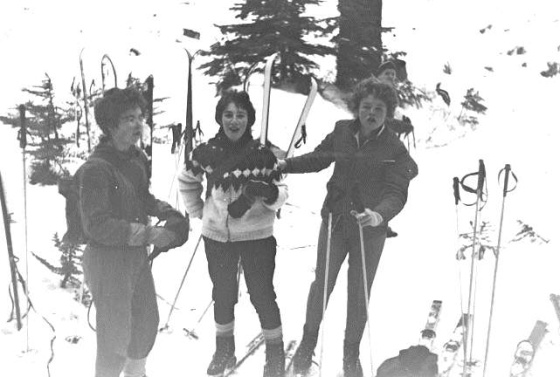
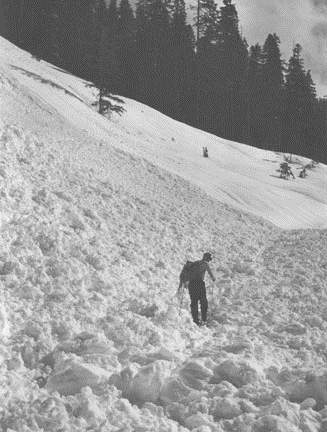
Keep In Touch